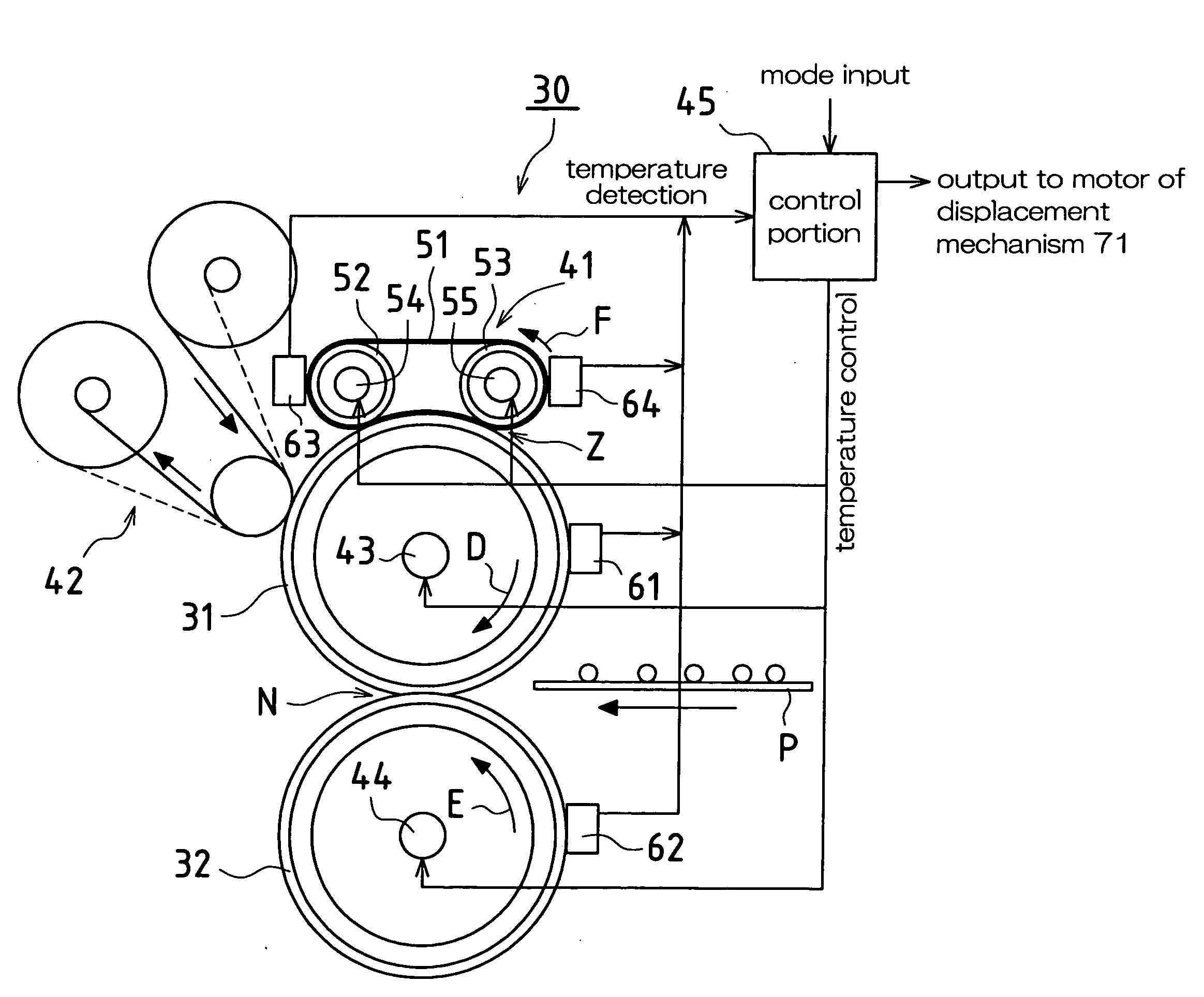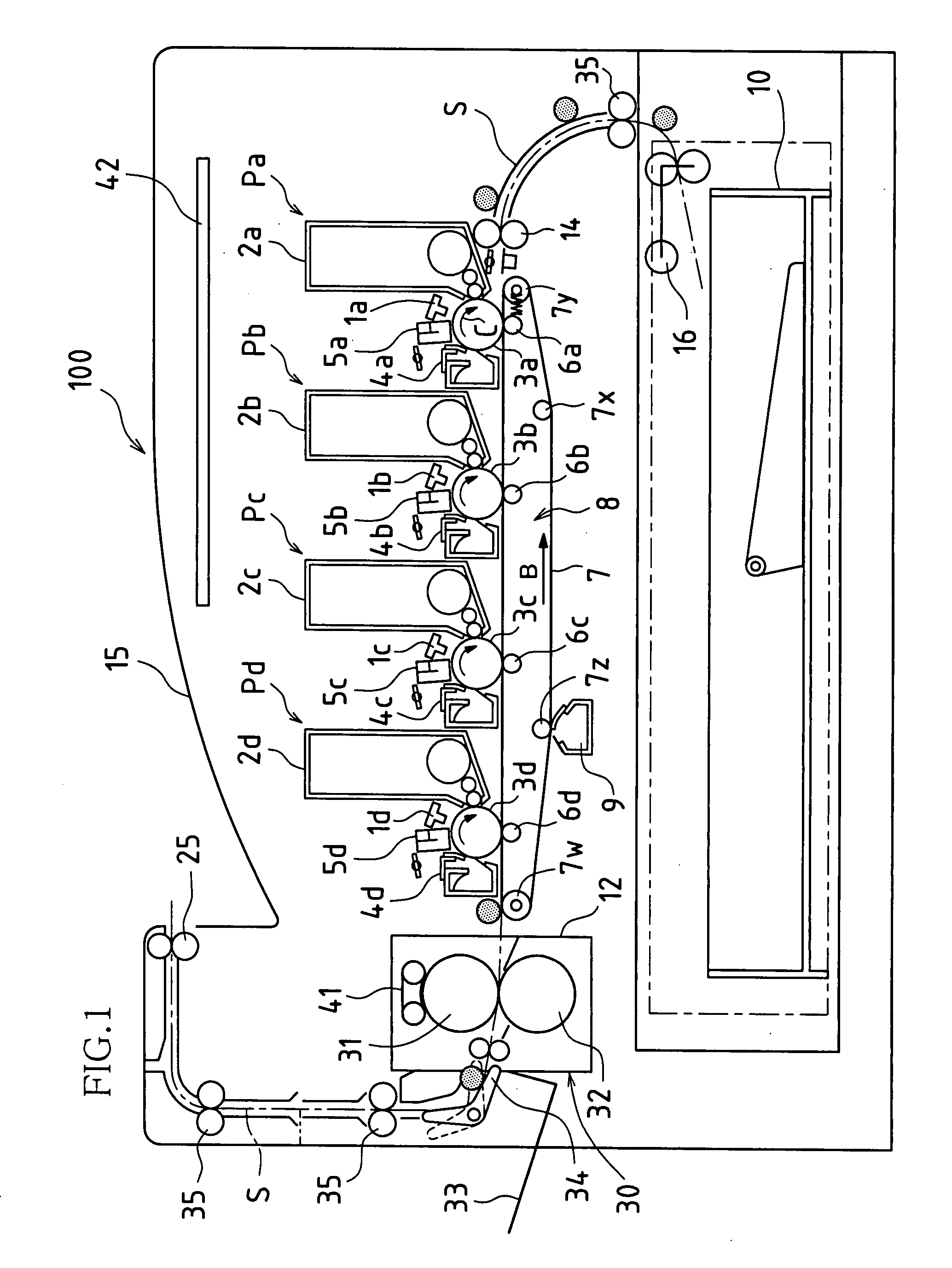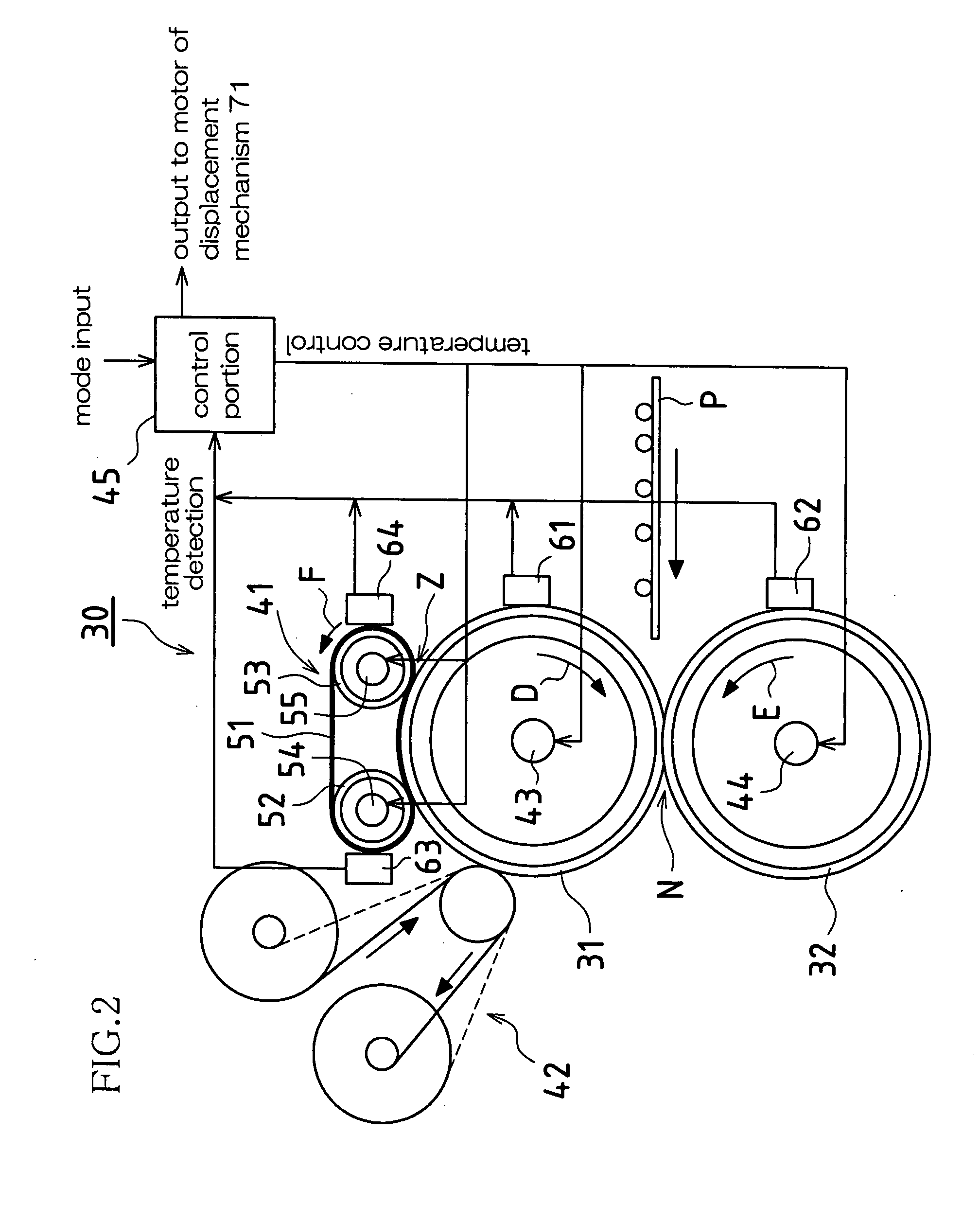Fixing apparatus
a technology of fixing rollers and fixing rollers, which is applied in the direction of electrographic process apparatus, instruments, optics, etc., can solve the problems of inability to transfer the amount of heat necessary for fixing the toner image onto the recording paper sheet, the surface temperature of the fixing rollers is prone to drop for increases in the transport speed or processing speed, and the inability to fix the toner image accurately. to achieve the effect of accurately controlling the surface temperature of the fixing rollers
- Summary
- Abstract
- Description
- Claims
- Application Information
AI Technical Summary
Benefits of technology
Problems solved by technology
Method used
Image
Examples
Embodiment Construction
[0051]Hereinafter, an embodiment of the present invention is described in detail with reference to the accompanying drawings.
[0052]FIG. 1 is a cross-sectional view that schematically illustrates an image forming apparatus 100 viewed laterally in which one embodiment of a fixing apparatus according to the present invention has been applied. The image forming apparatus 100 receives image data that has been transmitted in from the outside and forms on a sheet of recording paper a color or a monochrome image indicated by that image data.
[0053]In the image forming apparatus 100, color image data is handled by being indicated as an image made up of black (K), cyan (C), magenta (M), and yellow (Y) colors, and for images made up of other colors, the image data is first subjected to a process in which the other colors are converted to black, cyan, magenta, and yellow, then the image data is used.
[0054]The image forming apparatus 100 is provided with components such as image forming stations ...
PUM
 Login to View More
Login to View More Abstract
Description
Claims
Application Information
 Login to View More
Login to View More - R&D
- Intellectual Property
- Life Sciences
- Materials
- Tech Scout
- Unparalleled Data Quality
- Higher Quality Content
- 60% Fewer Hallucinations
Browse by: Latest US Patents, China's latest patents, Technical Efficacy Thesaurus, Application Domain, Technology Topic, Popular Technical Reports.
© 2025 PatSnap. All rights reserved.Legal|Privacy policy|Modern Slavery Act Transparency Statement|Sitemap|About US| Contact US: help@patsnap.com



